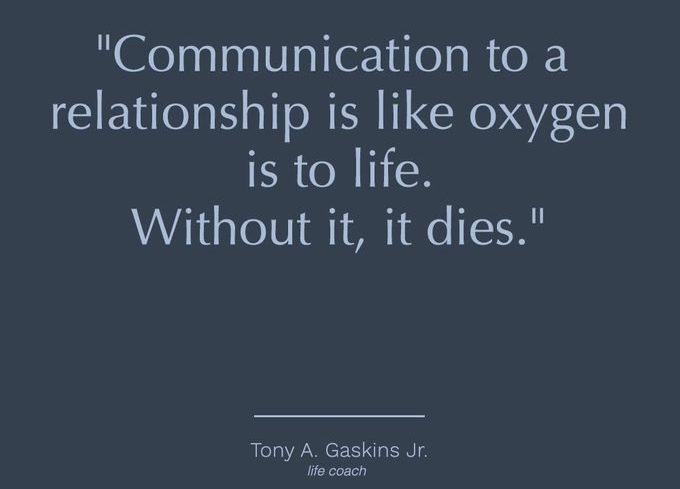
Communication problems happen between family members. My life coaching clients often need help with communication skills. Effective communication does not just happen. Anybody can talk, not everybody can communicate effectively.
When my girls were teenagers I would often think of that song by Rex Harrison “Talk to the Animals.” I was sure that it would be easier to talk to animals rather than those girls. (And I’m sure the animals would have at least listened)
The purpose of communication is to relay information from one person to another so the sender and receiver understand the message. Although the sender should try to be clear in the message, the receiver should confirm a clear understanding of the message.
Therein often lies the problem. Either an unclear message or and/or the misunderstanding by the receiver leads to miscommunication.
Communication is a process
Think of communication as two people throwing a ball back and forth. Imagine the ball is the message. It can be a conversation, a letter, an email, or even a song, a book or a work of art.
The sender composes his message and sends it (tosses the ball) hoping to convey his meaning. Ideally the sender is aware of the receiver’s communication skills and attitudes. In addition, he should assess the receiver’s experiences and culture. Also, for clear communication to occur, the medium (verbal, written, or visual) and the message must match.
The receiver must translate the message as the sender intended. But no two people interpret information in the exact same way, Misinterpretation often occurs. Misinterpretation (on purpose or inadvertent) will lead to misunderstanding.
To keep communication flowing, feedback must occur. The sender and receiver should check to ensure the the receiver understood the message as intended. Therefore, sender and receiver share responsibility for ensuring feedback.
Communication is difficult
As you can see, this whole process is easier done than said. You are encoding and decoding information all day long. Also, you use each of your senses without being consciously aware. You just do it. Understand that you aren’t communicating through just the words you are saying. You also often communicate more through your tone of voice, volume and speed. But you also communicate using facial expressions, eye contact, posture and hand movements. All of these convey information along with the words themselves. These nonverbal cues often get the first reaction. “Don’t roll your eyes at me.” “ Was that sigh supposed to mean something?” “Why are you raising your voice?”
Is it any wonder that misunderstandings occur?
Figuring out communication barriers becomes a matter of locating where the problem lies. Maybe the problem lies with the sender and their message. Otherwise, it may stem from the receiver and their interpretation or their feedback. Or the cause of the problem could involve the attitude and environment between sender and receiver.
How many times have you thought you communicated clearly only to later find you were misunderstood. On the other hand, If the sender and receiver recognize the barriers and act accordingly, clear communication can happen.
So, communication barriers arise in one or more ways. Communication could be blocked by:
- what is communicated
- how it is communicated
- and how it is received and understood.
The most common communication barriers are identified below.
Your Language
Language includes different levels of meaning. Use specific words, and speak clearly. Avoid hyperbole and exaggeration for effect. Also avoid slang and pop cultural references unless your reciever can understand them.
Your Audience
Different experiences, education, backgrounds and culture make each of us unique. How you see and interpret the world is unique to you. Others perceive it differently. Consider shaping your message to the receivers perspective. Then seek feedback to make sure of successful communication.
Competition or distraction
Command the attention of the receiver. Have important conversations where there is no noise or disturbance. Try to focus without interruption of cell phones, other conversations, or things competing for attention. Look for or give nonverbal cues of reception.
Listening
After you have spoken, listen. When somebody else speaks, listen. Do not just hear-listen. Hearing refers to the sounds that enter your ears. Listening, however, requires more than that: it requires focus and concentrated effort, both mental and sometimes physical as well. Listening means paying attention not only to the story, but its manner of telling. Consider the use of language and voice, and how the other person uses his or her body. In other words, pay attention to both verbal and non-verbal messages.
Feelings
The biggest communication barrier to families is the emotional state of senders and receivers. If you cannot present logical unemotional statements or you can not understand the speaker because of the emotional climate, you can not communicate. You will argue. Arguing achieves a predictable outcome. It solidifies each person’s stance. Which, of course, guarantees the exact opposite of what you’re trying to achieve. It also wastes time and deteriorates relationships.
Communication, a final word
Communication requires a two way street. It demands the full cooperation of both the sender and receiver of a message. They must make the right choices. They have to avoid all the perils—personal and situational—that lead to costly miscommunication. Because mis-communcation means misunderstandings, hurt, anger and loss.
Related Articles: Mindfulness
* Please leave a comment below. You may comment anonymously or you may use your first name. We may post or quote your comment on the website. We will never post or share your last name, email address or any other personal identifying information.
